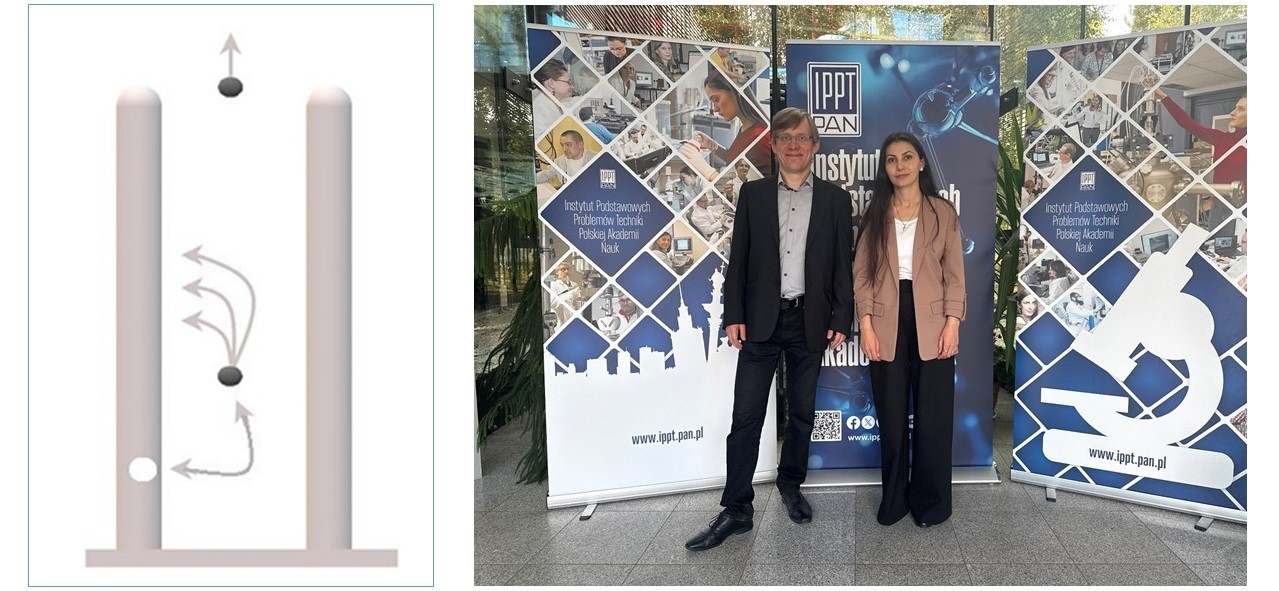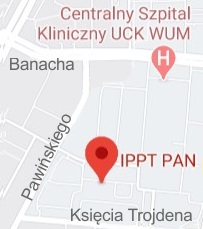According to the resolution of the Scientific Council of IPPT PAN, Naira Grigoryan has been awarded the PhD degree in Engineering and Technical Sciences, in the discipline of Materials Engineering. The doctoral dissertation is titled: „Low energy field electron emission from nanostructures: theoretical framework”.
Field electron emission (FEE) is a crucial tool of nanotechnology, a source of electron beams valued for its stability, luminescence, and nowadays, safety and low energy consumption. Carbon Nanotubes (CNTs) have been identified as excellent sources for field emission. However, a theoretical framework to describe low-energy field emission is currently unknown, primarily due to unavoidable, correlated behaviour of one-dimensional (1D) materials. This work aims to develop such a theoretical formalism.

Fig.1. Schematic field emission from nanotubes. Fig.2 : Naira Grigoryan and dr hab. inż. Piotr Chudziński
It is known, that for over four decades, that 1D systems have been described by the Tomonaga-Luttinger liquid (TLL) theory, which is based on collective modes such as plasmon-type modes, thereby automatically accounting for interactions. Our hypothesis is that the TLL can be used here to provide a description of field emission from these systems. The collective effects have been included in both the density of states (DOS) and the tunneling amplitude, as these are the primary factors to calculate. Therefore, the TLL effects have been incorporated into both of these calculations.
Along with the calculations of the transmission for the general case of barrier described by a fractional power law, the canonical Fowler-Nordheim (FN) theory has been expanded.
An exact analytical formula, expressed in terms of Gauss hypergeometric functions, has been derived. It fully captures the emission for this generalized problem, including the screened interaction with the image potential. Initially, the accuracy of the approximation has been compared to the most advanced FN formulation where transmission is expressed in terms of elliptic integrals. Subsequently, the dependence of the current on the exponent of the power law has been thoroughly analyzed. To align with experiments, several examples of rough metallic surfaces and dielectric-covered surfaces have been observed demonstrating their compatibility with formalism.
In the following, parameters were identified that allow for exact analytical expressions for the finite temperature local density of states (LDOS) of TLL. Merging the results for LDOS N(r,ω;T) and the transmission probability T(ω,F), the current J(ω,F) was obtained, thus establishing a formalism that simultaneously captures the collective effects due to electron-electron interactions and thermionic emission. The results reveal that different types of nanotubes, along with their minigap and compressibility parameters, can be easily distinguished, based on field emission measurements of these materials.
Overall, this thesis presents an investigation of the quantum mechanical phenomena of FEE from CNTs, emphasizing the application of many-body physics to explain the effects of electron-electron interactions in these nanostructures.















